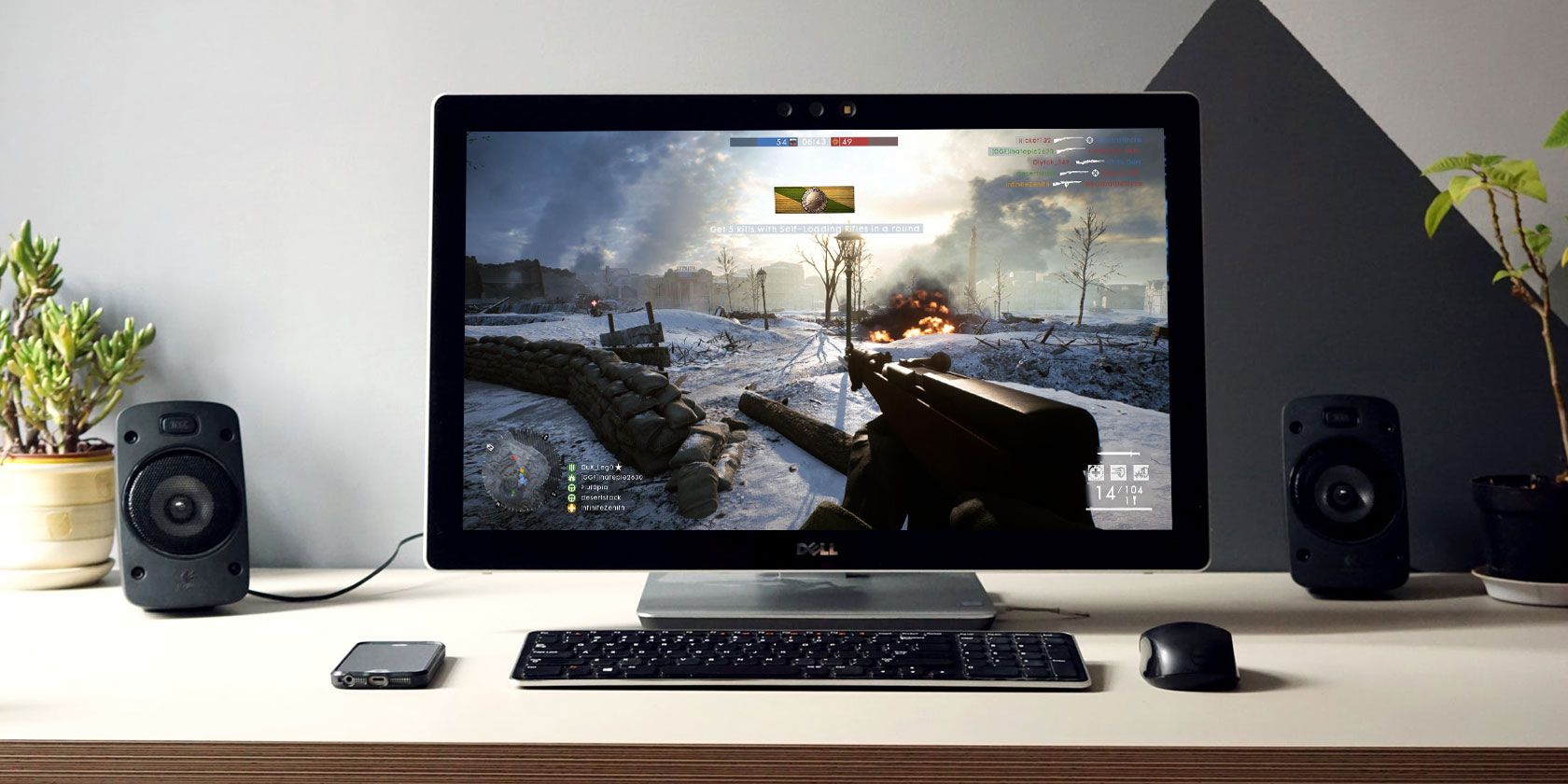When you're looking to buy a new monitor, there are many factors to consider, including size, resolution, and aspect ratio. Another important aspect you might hear about is the refresh rate.
But what exactly is refresh rate on a monitor, and is a higher refresh rate important? Let's find out.
What Is a Refresh Rate?
The refresh rate of a monitor (or other display) refers to the maximum number of times per second that the image displayed on the screen will be updated. This is measured in hertz (Hz).
A higher refresh rate means more information reaches your eyes in the same amount of time, leading to smoother-looking motion. Remember that video is technically just a series of images being shown very quickly to have the effect of motion.
Most standards monitors are 60Hz. However, you can also buy monitors, usually meant for gaming, that boast higher refresh rates. Common refresh rates for higher-tier monitors are 144Hz or even 240Hz.
These numbers make it easy to compare one monitor to another. A 120Hz monitor can display twice as many images in a second as a 60Hz monitor, for example.
Refresh Rates vs. Frames Per Second
Because monitors with higher refresh rates are capable of displaying smoother motion, you might think that buying one will instantly improve the look of everything on your PC. But this isn't necessarily the case.
Remember that the refresh rate is the maximum rate at which your monitor can update the displayed image. But whether a program actually sends output to your monitor that fast depends on its frame rate. The frame rate measures the number of video frames sent to your display per second.
To take advantage of a display with a higher refresh rate, your computer has to send data to the display much faster. Most software, such as productivity apps or video playback utilities, won't be affected by an ultra-high refresh rate.
Movies are shown at 24 frames per second (FPS), and YouTube currently caps out at 60FPS; even basic 60Hz monitors can handle these without issue. A higher refresh rate thus won't make most videos look any better. This also applies to most productivity apps. For example, Microsoft Word won't have any noticeable difference at 144FPS compared to using it at 60FPS.
As a result, high refresh rates are really only important when playing video games. When playing a game, your graphics card generates the visual data and sends it to your monitor. Thus, if you have a powerful enough graphics card, it can send data to the screen more quickly.
This means you can enjoy games at higher frame rates, providing smoother gameplay.
The Problem of Screen Tearing
As the frame rate your graphics card sends and the refresh rate of your monitor are often different, a common PC gaming problem people run into is screen tearing. This can happen, among other causes, when your graphics card sends out frames at a higher rate than your monitor can handle.
If you try to play a game at a high frame rate on a low refresh rate monitor, you'll run into this issue. You'll see multiple frames on your screen at the same time that aren't lined up correctly, leading to the "torn" effect.
To avoid this, games are usually capped at your monitor's refresh rate by default. So if you have a 60Hz refresh rate monitor, your games should not run at much more than 60FPS.
There are also more advanced solutions to this problem, such as G-Sync, VSync, and FreeSync. See our explanation of common video game graphics settings for more info.
How Important Is Refresh Rate?
The main group of people who benefit from a high refresh rate monitor are competitive gamers. For professional players of first-person shooters like Counter-Strike: Global Offensive or Overwatch, a higher refresh rate is vital for optimal gameplay.
When your monitor displays more frames per second, you also see visual information that you would have completely missed on a lower-hertz display. This makes it easier to track fast-paced action.
It's difficult to show a clear example of frame rates above 60FPS if your monitor can't display them. If you're curious, have a look at the below video to see the same action in various frame rates, slowed down so it's easier to tell the difference.
Some people say higher refresh rates make it easier to aim, as targets move more smoothly. But this varies by individual and can change based on how good your eyesight is.
Part of this is due to blurring. When our eyes see a series of frames, our brains fill in the changes from one frame to the next, making the frames look like continuous video instead of the series of still images they actually are. But this filling-in process results in blurring. If there's more information sent to our brains in the form of more frequent frames, movement looks sharper.
Another issue in high-level gaming is input lag, which is the delay between you making an input and the game recognizing that input. High refresh rate monitors can reduce input lag, because there is a shorter amount of time that passes between your input and the action happening on-screen.
This difference is tiny—in the order of milliseconds—but that can make a difference in competitive scenarios. For professionals and other serious players, every tiny advantage matters.
But what if this doesn't describe you? If you're a casual at-home gamer, or don't play games at all, is a high refresh rate monitor worth the extra cost?
Are High Refresh Rate Monitors Worth the Money?
If you don't play video games, then buying a monitor above 60Hz is likely not worth the cost for you. There are few applications outside of gaming where higher frame rates will make a noticeable difference. If you want to upgrade your monitor, you're better off putting the money towards a display that's larger, higher-resolution, or has better image quality.
For gamers, high refresh rate monitors are a noticeable upgrade, especially if you play fast-paced games like shooters. Going from 60FPS to 144HZ isn't as major as jumping from 30FPs to 60FPS, but it does make a difference. If you only play slower-paced games like strategy titles, you may be perfectly happy at 60FPS.
60FPS is a decent standard—if your computer can't hit that, you should prioritize upgrading your graphics card (and potentially other components like the CPU) first.
If you're happy at your current frame rate, you may prefer to put money towards an upgrade to your display resolution, size, or similar instead.
A 240Hz monitor that's 24 inches wide at 1080p resolution would cost you a good bit of money. For around the same price, you could buy a larger 27-inch monitor at 1440p resolution with a still-impressive 144Hz refresh rate. Or if refresh rates don't matter to you, you could buy a huge 34-inch monitor at 4K resolution and a standard 60Hz refresh rate instead.
Alternatively, you could buy a cheaper monitor and put the money you save towards a better graphics card. Remember that the highest refresh rate monitor in the world won't make a difference if your graphics card can't keep up. It's better to have a high-end graphics card with a middle-range monitor than a top-of-the-line monitor and mediocre graphics card.
What's the Most Important Factor When Choosing a Monitor?
What you should prioritize in a monitor depends on what you plan to use it for.
If you need a new monitor for general computing purposes, in most cases you'll want a higher resolution so the picture looks sharper. This is beneficial when you're watching movies or doing various productivity tasks. You may also consider buying a larger monitor so you can see more at once, or even buying two cheaper monitors so you can take advantage of dual displays.
When buying a monitor for serious PC gaming, a higher refresh rate is important. If possible, try to shop for monitors in-person where you can see the differences between refresh rates. While you can find comparisons online, you can't really appreciate videos of 144FPS gameplay on a 60Hz monitor.
Do Refresh Rates Matter? In Some Cases!
As we've seen, high refresh rates are really only important for serious gamers. Casual gamers can enjoy most titles at 60FPS, while general PC users don't have much use at all for higher frame rates. They'll usually be better off spending money on a bigger, higher-resolution monitor instead.
Having a monitor capable of high frame rate output is great, but there are a lot of other components that go into a smooth PC gaming experience, too.


